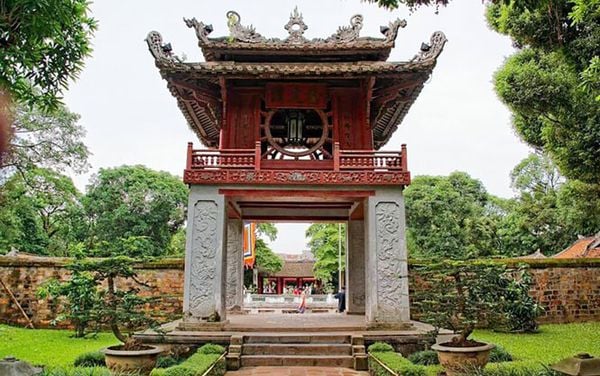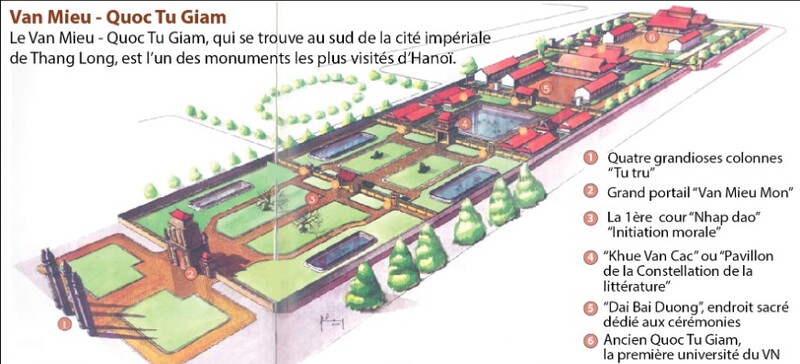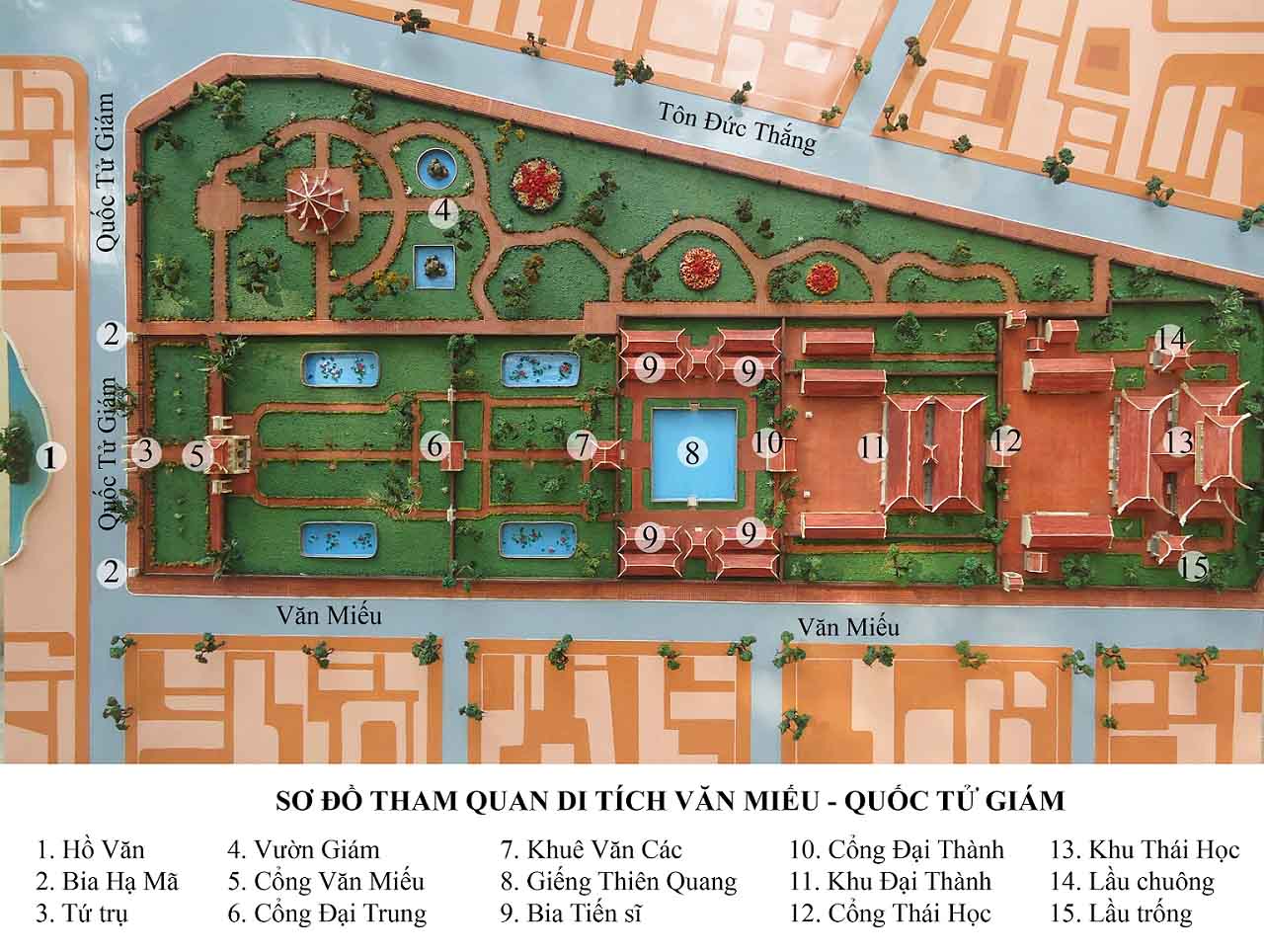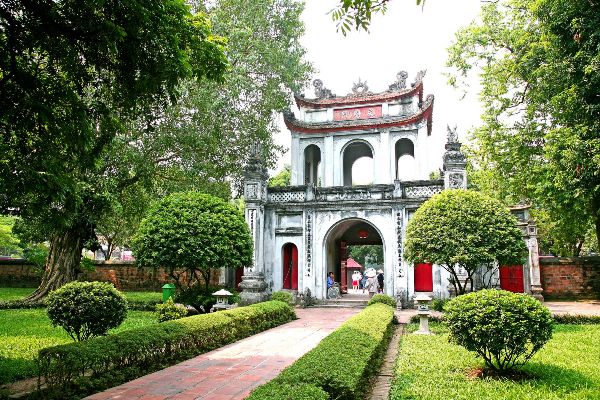TEMPLE OF LITERATURE – QUOC TU GIAM WITH A TRADITION OF PROMOTING LEARNING
Located in the heart of the bustling capital Hanoi, the Temple of Literature – Quoc Tu Giam is a special historical and cultural relic complex, attracting tourists not only by its ancient and solemn beauty but also by its great historical value. This is considered the first university in Vietnam, where many talents have been trained for the country over the centuries.
The Vietnamese people have long attached great importance to education. This education has produced many talented people in the fields of culture, politics, diplomacy, military, etc., making the country famous in history. In particular, the promotion of learning has been of interest to and implemented by both the state and the people.
During the Ly Dynasty, the policy of promoting learning was most clearly demonstrated by the construction of the Temple of Literature in Thang Long citadel in 1070 as a place to worship the Confucian saints and sages and for the Crown Prince to study. In 1075, King Ly Nhan Tong opened the first “Minh Kinh Bac Hoc” examination in the history of Vietnamese examinations. A year later, he opened the Quoc Tu Giam to teach the children of nobles. Later, under the Tran Dynasty, the Imperial Academy gradually expanded its scale, accepting excellent students from the common people to study.
During the Le Dynasty, the imperial examinations were organized and developed prosperously. The Imperial Academy became the largest center for training talented people in the country. Therefore, the activities to encourage learning during the Le Dynasty developed even more. Especially during the early Le Dynasty, the activities to encourage learning were very rich and diverse, such as: erecting a stele to honor those who passed the imperial examinations at the Temple of Literature, organizing a ceremony to announce the names on the golden board, organizing a solemn ceremony to return home to pay respect to ancestors, granting banquets, titles, etc. to those who passed the exams.

The best time for you to visit the Temple of Literature in Hanoi
Visit the Temple of Literature at any time of the year. Especially in the spring of the lunar calendar, along the streets of Van Mieu, you will find men with calligraphic booths.
Learn the architecture of Van Mieu Quoc Tu Giam Hanoi
Traveling to Hanoi, visiting Van Mieu Hanoi, which is located in Dong Da district must definitely learn its architecture. Currently, this relic complex is located in a 54,331 square meter campus with many small architectural works inside, including Ho Van, Van Mieu Mon, Dai Trung Mon, Thien Quang well, Dai Thanh Mon, Khue Van Cac, home Thai Hoc, doctoral beer and five courtyards in the inner area. Teachers in the East and West include 14 rooms.

The entire architecture here is the early Nguyen architecture, arranged for each zone, each layer according to the North-South axis, simulating the image of Chinese Confucius temples but still retaining the artistic style traditional arts of the nation. In front of Van Mieu, there is a large lake called Van Chuong lake. In the middle of the lake, there is Kim Chau mound. In addition to the main gate, there are 4 pillars, on the left and right sides are Ha Ma stele, surrounded by high walls.

| 1. Literature lake | 4. Giam garden | 7. Khue Van Cac | 10. Dai Thanh gate | 13. Thai Hoc area |
| 2. Stelae commanding horsemen to dismount | 5. Temple of Literature gate | 8. Thien Quang well | 11. Dai Thanh area | 14. Steeple |
| 3. Four pillars | 6. Dai Trung Mon | 9. Stelae of Doctors | 12. Thai Hoc gate | 5. Drum floor |
The value of the Temple of Literature of Hanoi
In terms of relics, it is said that the two doctoral steles on either side of Thien Quang well is the place to preserve the most precious relics of this historic site. The 82 Ph.D. steles are still valuable in many ways. These are the only original textual documents that have been kept in place, continuously since their creation.
Historians can find here documents about the history of education, names associated with national history, hometown, the identities of talented people that are specific in the Temple of Literature, through which they can determine the age for many monuments in undated places.
Geographers can search old sites to find ancient lands related to the present time.
Philosophers can find here evidence to determine the role of Confucianism in Vietnam
Vietnamese people everywhere also come here to find the surname of a certain ancestor belonging to our family in the past who was in the academic department
These are also documents with continuous systems, at least within 3 centuries (from 1484 to 1780) on stone carving technique. Art researchers and visual artists can find out the quintessence of national art from beer, turtle, pattern and motifs engraved on the stele to promote and apply in the mornings. modern creation.
There have been many research papers written about doctoral stele, but the exploitation of materials of 2 beer houses still continues. Scientists all believe that the doctoral epitaph deserves the “historical stone” phoenix with many unique and rare values of culture, history, art of crafting … not only for Vietnam but also for that gender.



